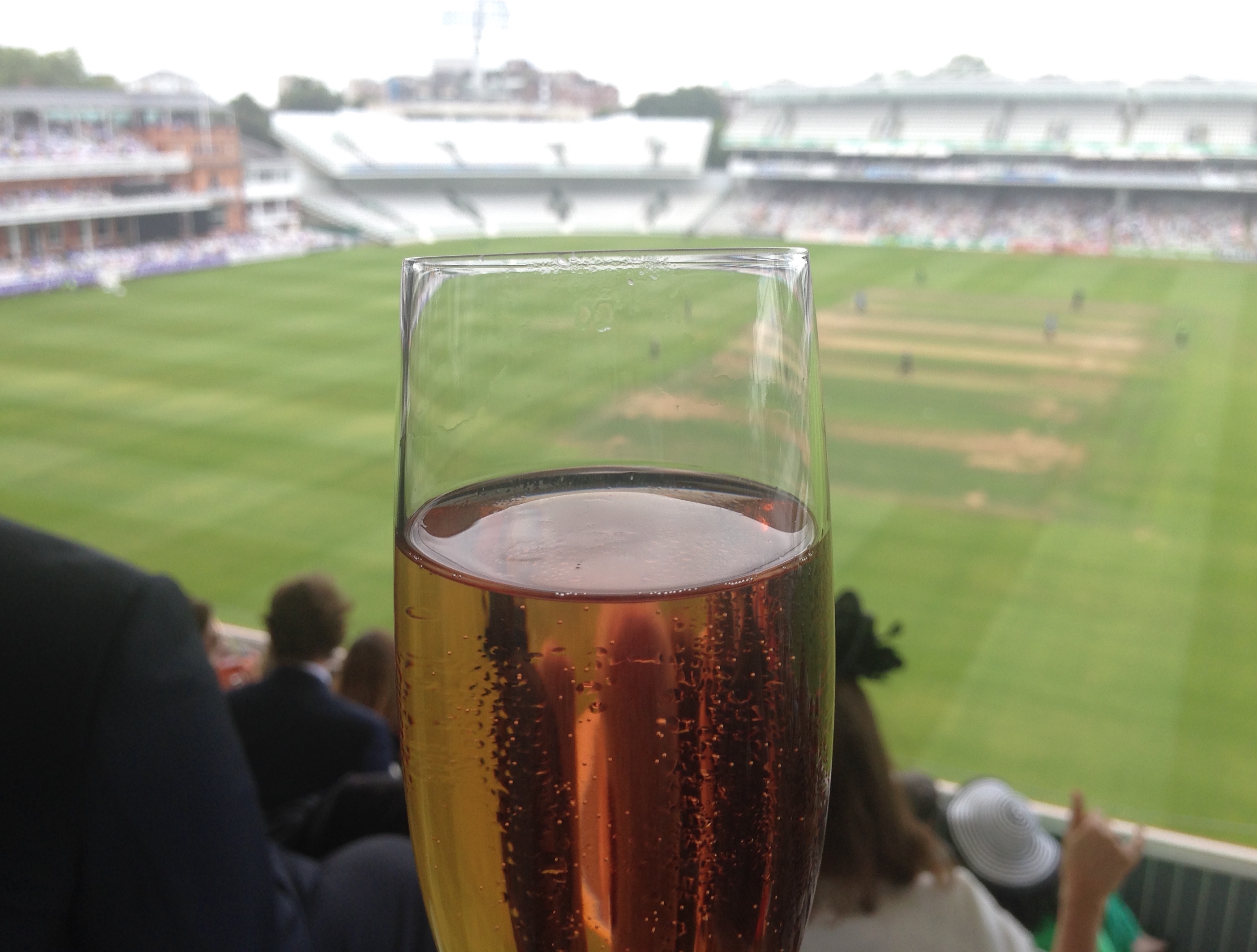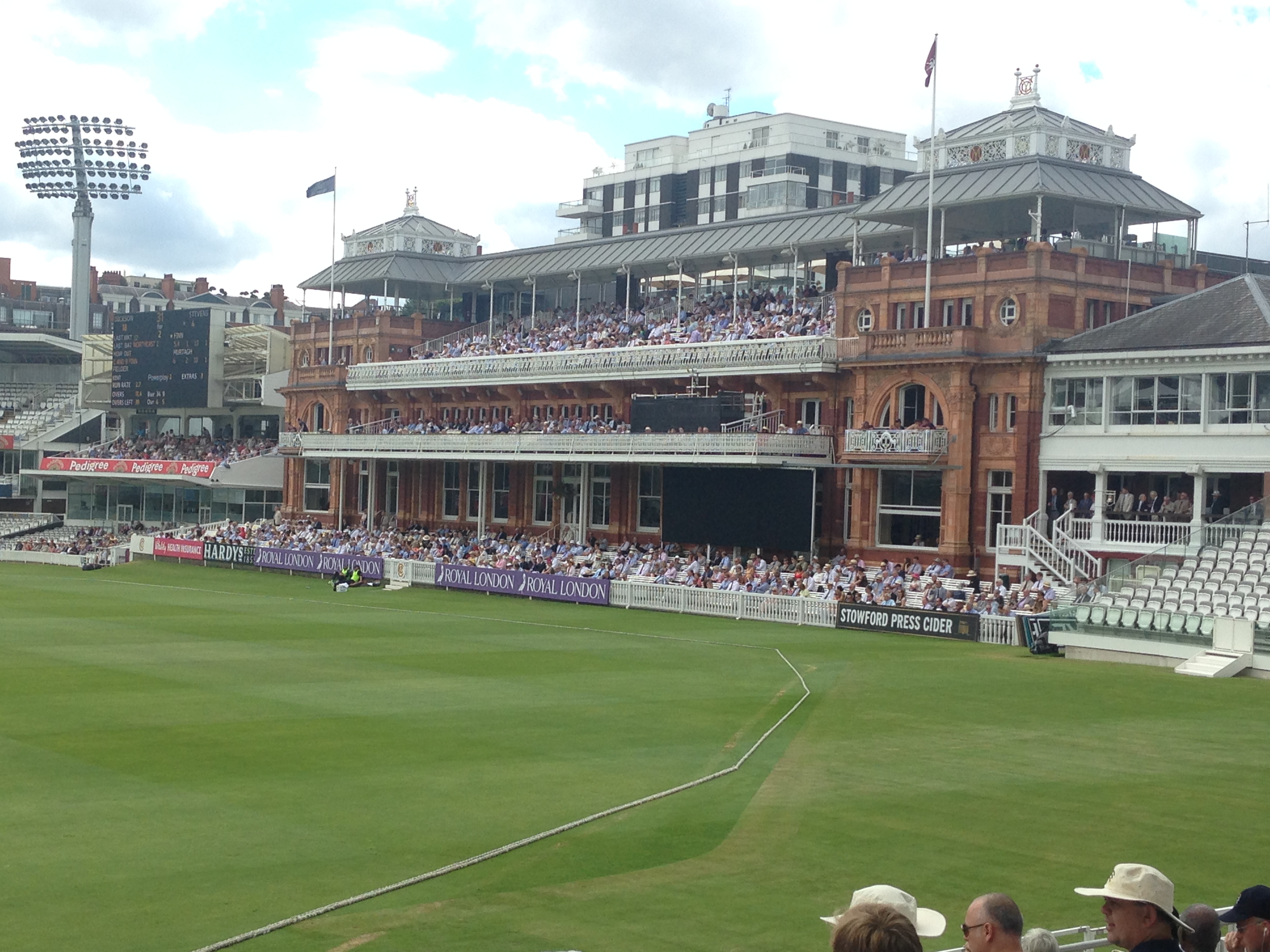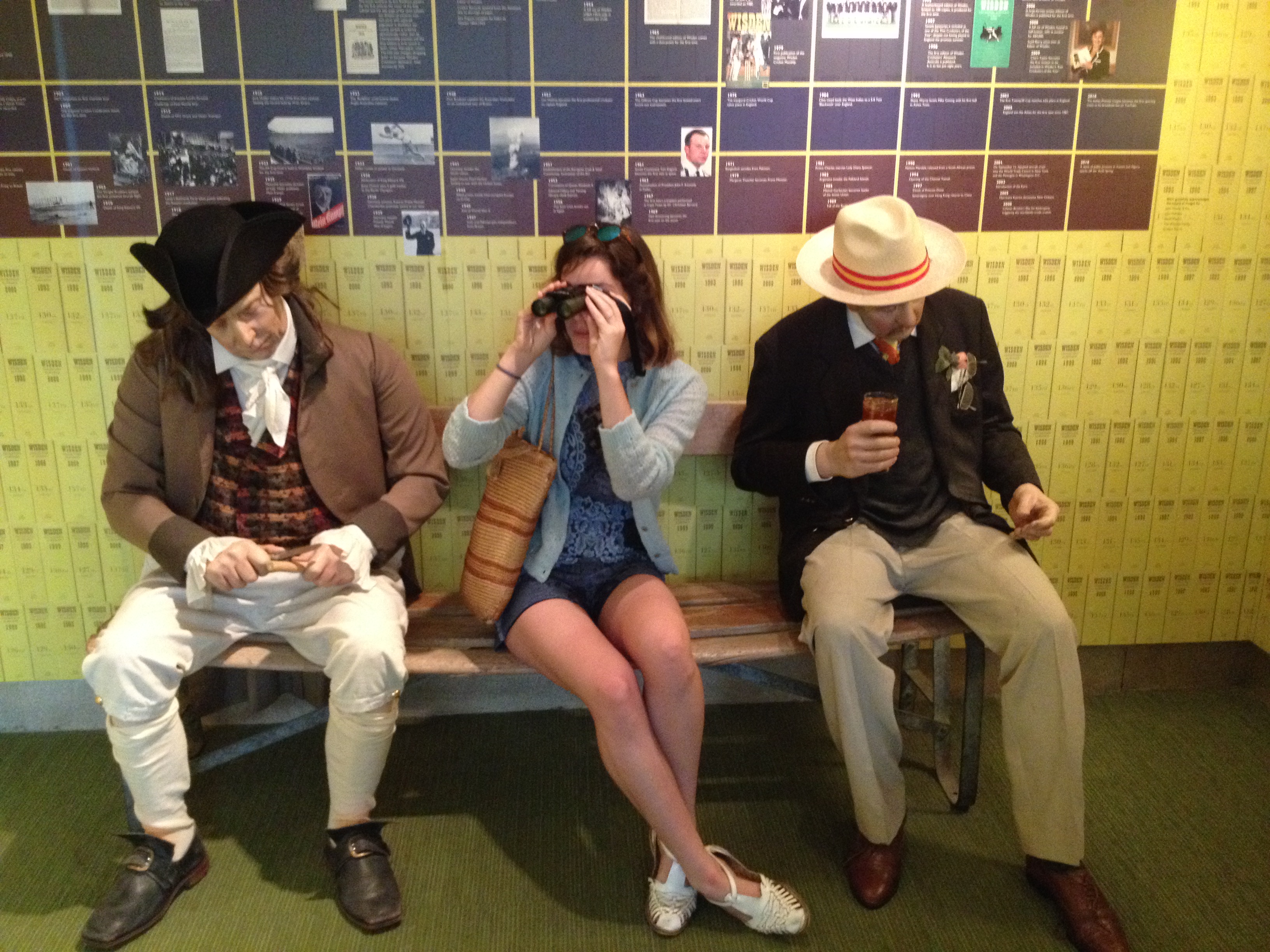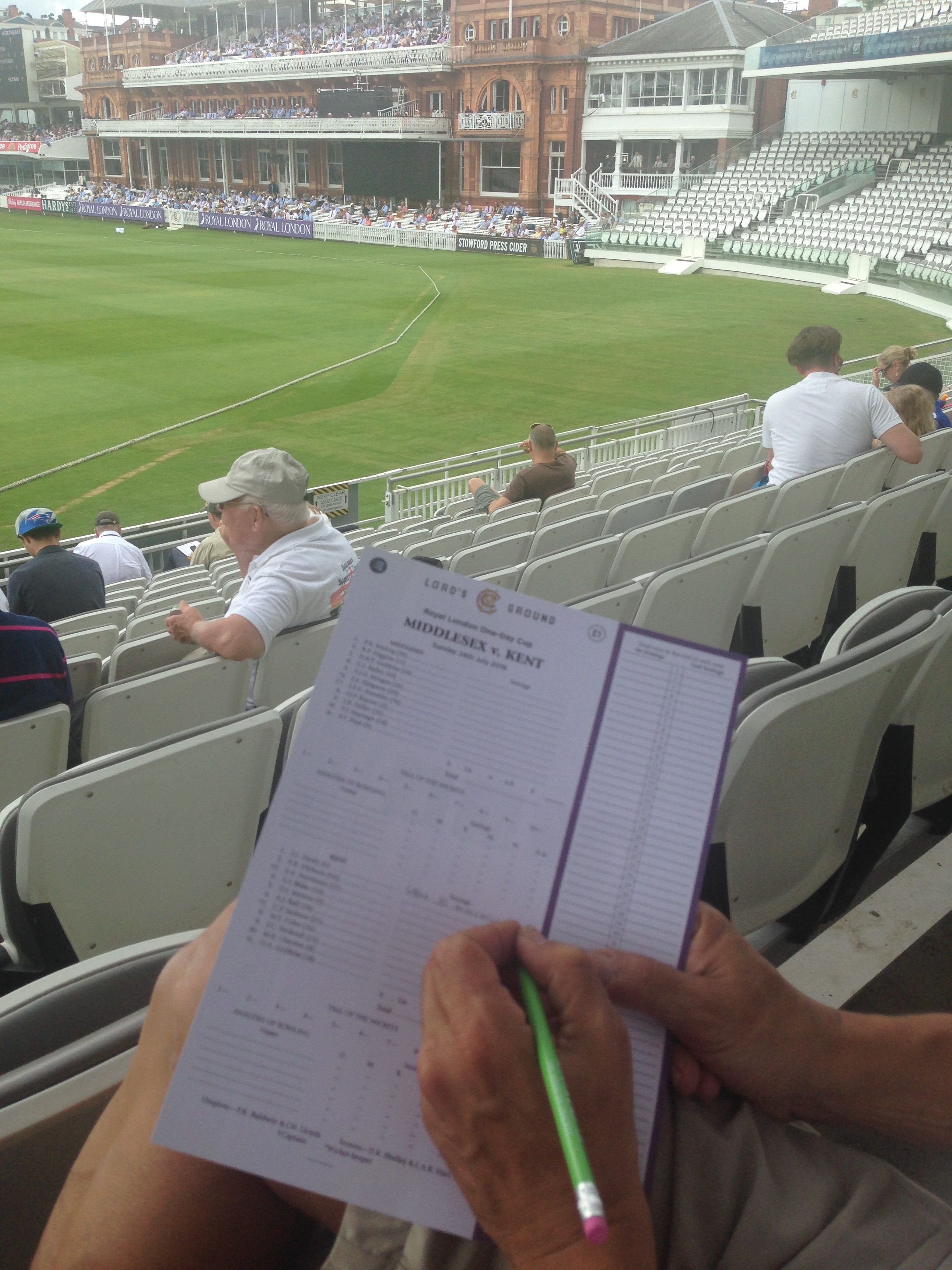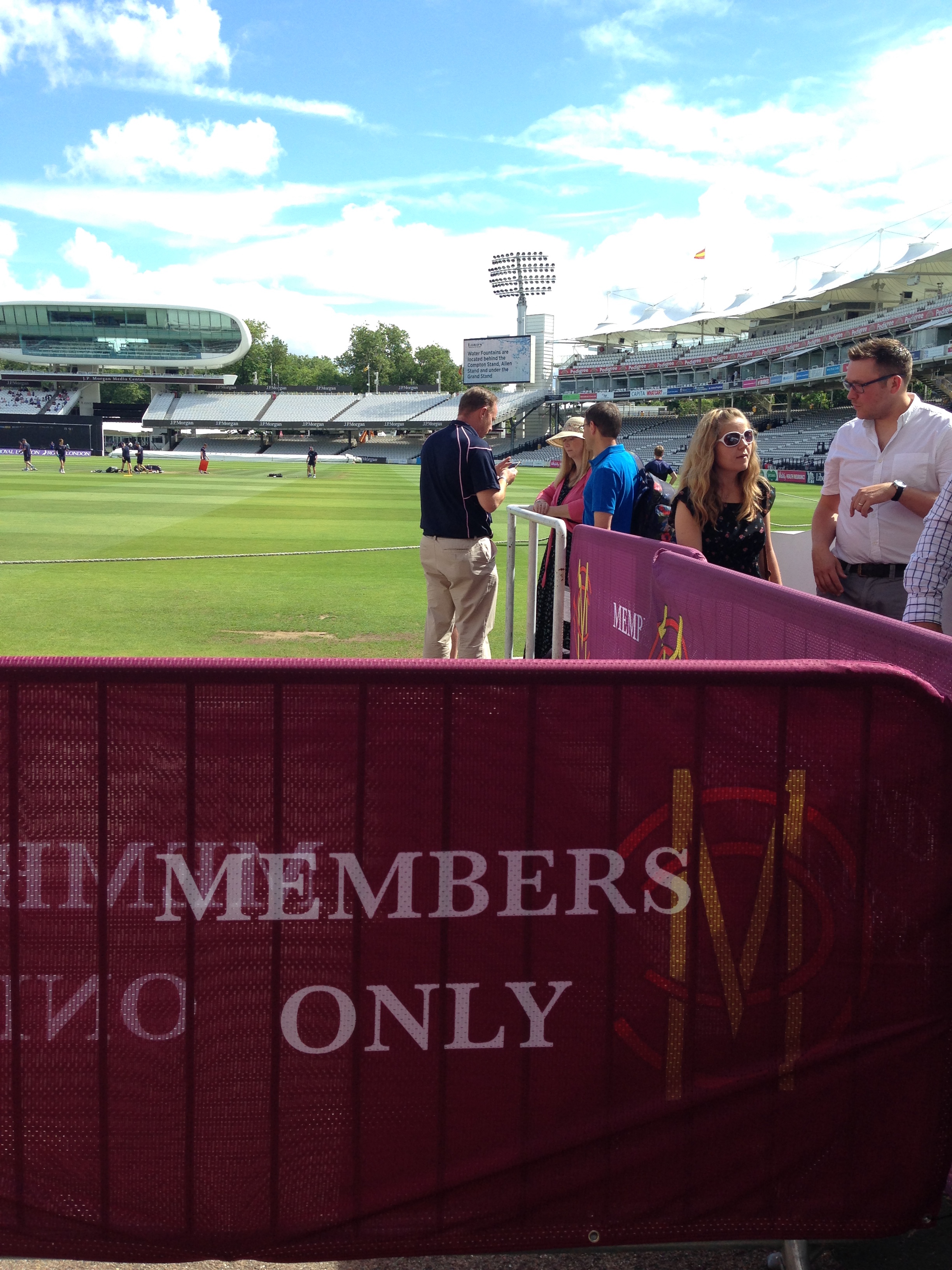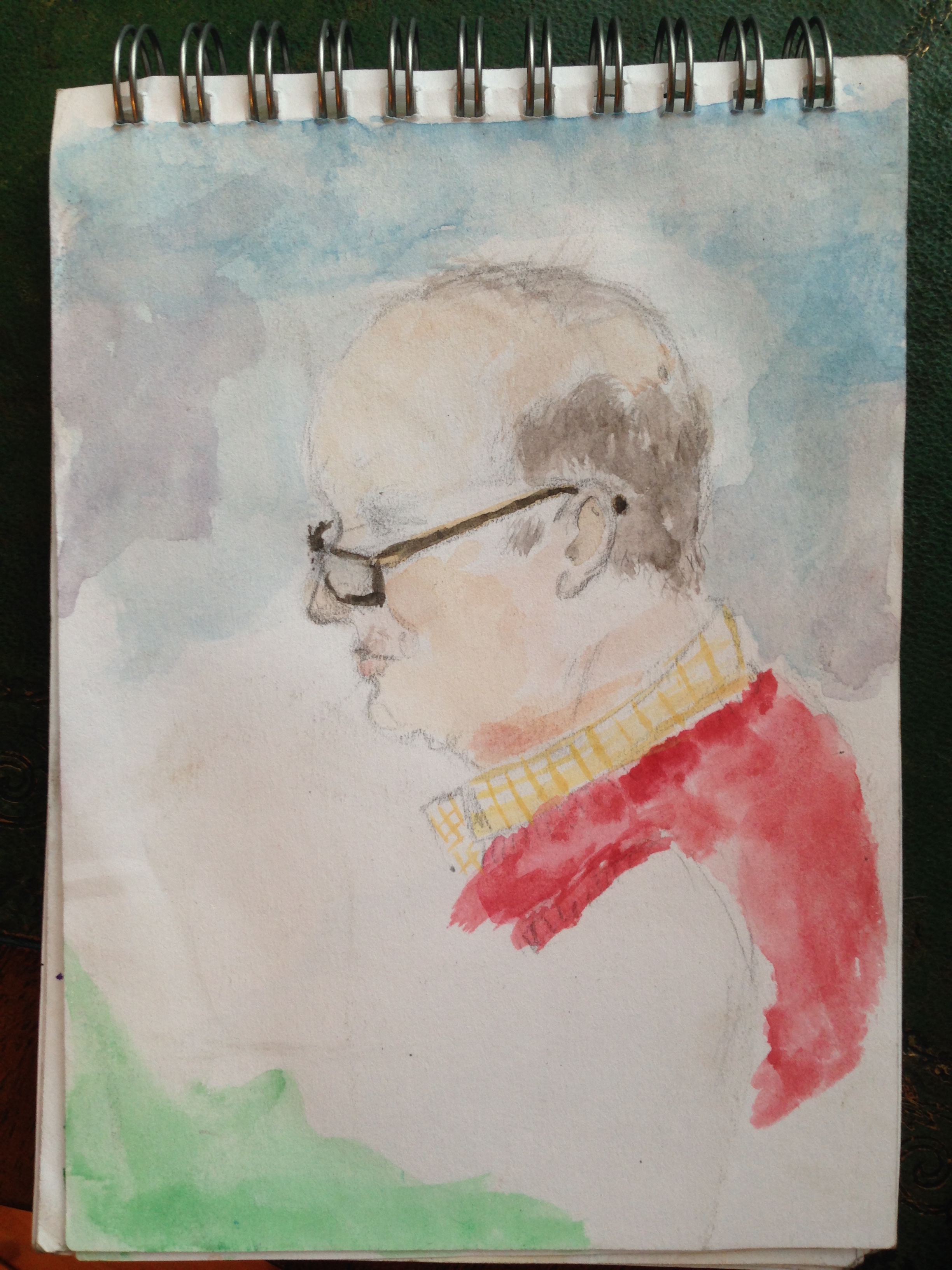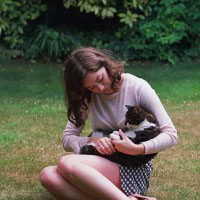 Lord's and Ladies'
Lord's and Ladies'
My first-ever cricket match fell on a special day
Cricket, the most quintessentially English sport, is notoriously slow-paced and complicated. For someone like me, who finds pretty much every sport boring and difficult to understand, this did not bode well. However, anglophile as I am, I couldn’t turn down an invitation to the hallowed Lord’s Cricket Ground to watch my first ever match. My date, anticipating how my 21st-century attention span would wither faced with a five-hour game (which is actually a short and more modern version - traditional cricket test matches are played for five days!), advised me to bring things to do, things to read, headphones, a nail file… He also packed a resplendent hamper to stave off ennui with nibbling. However, in the end I only had to pull out my watercolour set once, near the close of the second innings. As it turns out I, American-born, Super Bowl-phobic, Physical Education truant, enjoy the Gentlemen’s Game. And a day at Lord’s was cricket-ball-red letter.
The sun shone cheerily on Sunday morning and cast hat-shaped shadows on the pavement outside the ticket booth, where men and plenty of women began to collect. A handwritten note pasted in the window read simply “Ladies go free today”. Cool. I swanned through the turnstiles in a brand new blue summer dress, straw bag in hand, and was nearly lost in a calm sea of middle-aged men, all wearing the exact same shade of blue. They trickled into the Pavillion at the near end of the pitch, through an arch marked “members only beyond this point.” Ah, so these were the famed MCC - Marylebone Cricket Club, less recognisable, having switched their customary lurid ketchup-and-mustard striped ties and jackets for this more subdued hue, the colours of Middlesex County Cricket Club, who call Lord’s home turf (and who were pitted against Kent Spitfires that day).
The MCC is one of the most exclusive and elite society clubs in England. Joining takes approval by a total of four existing members, and even then, the waiting list - which the MCC itself notes is “a particularly long one” - takes an average of 27 years to traverse. Then, and only then, do you win the imponderable privilege of being kitted out in some of the most garish red and yellow blazers and ties (which you are not even allowed to remove on a hot day) and sitting in the oldest section of Lord’s. Only fairly recently in the 1990s were women allowed to join the revered ranks. For 200 years before, the only woman who sat in the club’s private stone stands was Queen Elizabeth II.
This weekend was therefore a rare occasion to celebrate women with an interest in cricket - MCC or otherwise. A quarter of the way through the first innings, a voice sang out through the loudspeaker that ladies (and their accompanying male guests, provided said guests came equipped with a jacket and tie) were welcome at a reception at the top of the Mound Stand, where they would find food, jewellry for sale, massages, manicures and pedicures available, and even a complimentary glass of pink champagne. Unfortunately, as we were not aware it was the ground’s annual Ladies’ Day, my accompanying guest was not dressed appropriately for access to the Mound Stand (this is through little fault of his own however; before the match he attempted to buy some very amusing MCC boxer shorts in the giftshop but was thwarted by the clerk who pointed out a sign announcing “All MCC colour merchandise purchasable by members only.”) This means that over two thirds of the items on display in the store aren’t for sale. Not even undies. But these things wouldn’t exist if there were not demand for them. Suddenly, I’m imagining the entirety of the Pavilion in their matching stripey knickers.
However, I wasn’t going to let being partnerless stand between me and free drinks. I made my way to the opposite end of the pitch and ascended into a scene of refinement I never expected to find in a sports arena. People queued for pop-up spa sessions, waiters paraded trays of champagne, elaborate hats nearly blocked the spectacular view of the middle. Vastly different from the peanuts and crackerjacks of a game of baseball.
But it wasn’t all fashion, fingernails and flutes for me. The cricket museum is a must-see at halftime. The accoutrements of the game are so aesthetically pleasing, and haven’t changed too much since the sport’s inception. The famous Ashes (leftovers from burning the bails of Australia’s win in England in 1882 signifying ‘the death of English cricket’) are on display in a tiny urn, as is the corpse of a sparrow killed by a high-flying ball in 1936.
The museum also celebrates how far cricket has come, with women being recently named Cricketer of the Year, and technological advancements that make the televising of cricket the most cutting edge of any sport.
Still, because its following is relatively small and civilised, there does not exist the hooligan-ish fanbase or player worship present in other sports. The lead bowler for Middlesex (Steven Finn, just appointed to the national team) came to quietly eat a sandwich with his girlfriend and the rest of us during the interval, young boys and girls tossed a ball back and forth to each other behind one of the stands. Players also get paid a reasonable amount - often below six figures - unlike other sportsmen. On Sunday, two Middlesex players scored a century, and had a partnership of over 200 runs. The crowd gave a exuberant but respectful standing ovation, braving the drizzle and wind that clouded the late afternoon. Swaddled in a new woolen blanket in county colours, perched among a crowd that ‘oohed’ and ‘ahhed’ in unison, listening to the intricate rules of the game, I felt full of something beyond cucumber sandwiches and Pimms - could it be that sense of sporting enthusiasm
